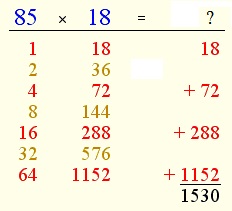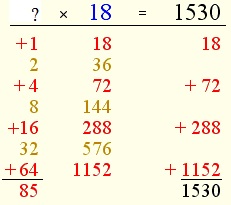Count Like An Egyptianby David Reimer |

|
Count like an Egyptian?! Have not we learned something in more than 3000 years to make emulating the ancient Egyptians a waste of time? David Reimer, the author of the book under review, offers an answer:
There are a number of reasons to learn Egyptian mathematics. Puzzle lovers will find it fun and challenging. History lovers will gain insight into the Egyptian mind-set. However, I believe the most important reason to study Egyptian mathematics is because it is so different. We're taught throughout our entire education that math simply is. (...) When you're exposed to a different system, you're forced to reconsider the immutability of "the math."
After reading and enjoying the book I'd like to expand on Reimer's arguments. (I prefer, though, to use the term "arithmetic" rather than "mathematics", because this is what it is.) Not only the Egyptian arithmetic is different, in some respects it is plainly better - simpler, more natural, and more powerful - than what the kids are being taught in grade school. Egyptian arithmetic allows for more direct estimates - both the values and the errors. For example, $\displaystyle\frac{2}{5}=\frac{1}{3}+\frac{1}{15}$ which conveys the idea that $\displaystyle\frac{2}{5}$ is close to $\displaystyle\frac{1}{3}$ and $\displaystyle\frac{1}{15}$ is a measure of their proximity.
Egyptian division is practically the same as their multiplication; both only require mastery of doubling, i.e., addition, and forcefully convey the importance of the relationship between a whole and its parts, not to mention that they offer a bridge, or a good starting point, for the introduction into computer systems and programming.
Let's consider an example. This is how the Egyptians would multiply $85$ by $18$ (although, of course, their numeration and symbolism would be quite different):

And this is how they would divide $1530$ by $18$:

History lovers will gain much more than just insight into the Egyptian mind-set. The author interleaves mathematical exposition with short essays on Egyptian history, culture, geography, mythology - all, like the rest of the book, beautifully illustrated.
I also suggest that the intended audience may be expanded to include mathematics and especially elementary school teachers. The manner in which the Egyptians grouped their numeric symbols allows for a simulation with any kind of material objects - building blocks, lego pieces, model cars, what not - such that the principles of their arithmetic could be explained in kindergarten, where the kids might find this more congenial than playing with decimal blocks.
I also feel that the material in the book and the manner in which it is presented make it a great resource for mathematical circles in early grades. It may not be suitable for students who are mainly concerned with the question, Where can this be used? or for teachers who fear being asked that question. However, for a lively and inquiring mind the book has a good deal to offer. It is well written, lavishly illustrated, and just awfully interesting. The book is a pleasure to hold, to browse, and to read.
Count Like An Egyptian, by David Reimer. Princeton University Press, 2014. Hardcover, 256 pp, $29.95. ISBN 978-0691160122.
|Up| |Contact| |Front page| |Contents|
Copyright © 1996-2018 Alexander Bogomolny73497055
